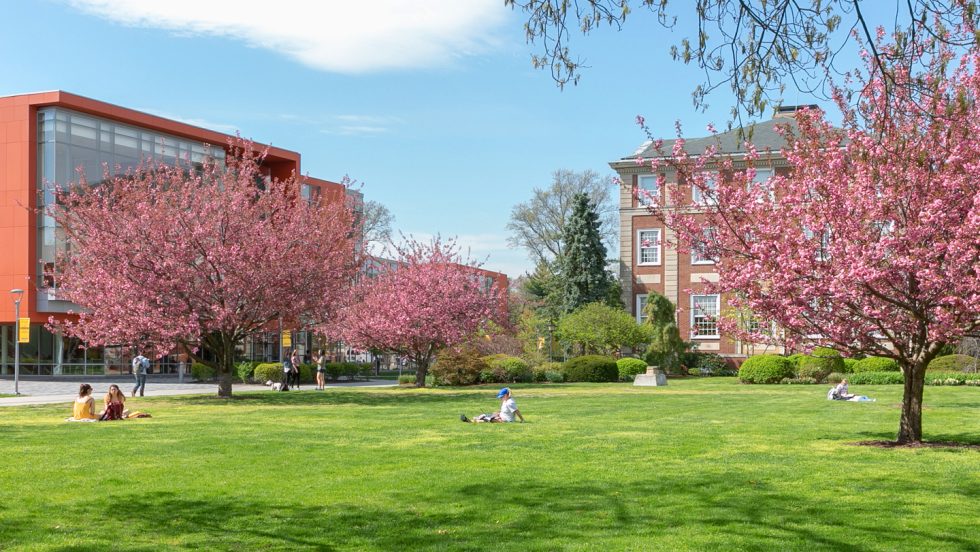
Adelphi's campus is a welcome oasis in the midst of suburban Garden City that embodies 19th-century naturalist Henry David Thoreau's edict that “We can never have enough of nature."
Registered with the American Public Gardens Association as an arboretum, Adelphi’s home for 93 years includes nearly 70 different types of trees and shrubs.
Adelphi’s grounds have been carefully tended by Robert Conaghan, associate director of facilities management for more than 20 years. He’s made it his mission to celebrate nature by keeping the campus pesticide-free. “Sustainability is what we strive for every day,” he said. “How we achieve this is ever-changing—and should be.”
How Does Our Garden Grow?
The Adelphi campus is home to a “large variety of different landscape settings to enjoy,” said Conaghan, “from isolated gardens to row plantings like those in our rose garden.”
Many native plants—including milkweed, golden aster, joe-pye weed, cardinal flower, button bush, golden rod, butterfly bushes, cone flowers and sweet azaleas—are found across the campus. While Adelphi’s native garden is presently under renovation, eastern redbud trees were recently planted in the vicinity.
To Conaghan, indigenous plants are a “win-win, because if they’re planted in the right soil and in the correct location, they need less attention than non-native plants. They also provide homes and food for native insects and animals and attract butterflies and other pollinators.”
A Haven for Birds, Bunnies and Lizards
Elms and oaks planted nearly 80 years ago provide shade for humans and shelter for birds such as woodpeckers, finches, warblers, grackles, bluebirds and cardinals. “We provide bird feeders all winter around campus and also have many berry-bearing shrubs for our feathered friends to feed on,” Conaghan stated.
The outdoor fishpond is a favorite with the birds. “Our fishpond by the library started with 24 four-inch fish. We average 200 babies a year—and our largest, ‘Moby,’ is white and about two feet long,” he said.
According to Conaghan, Adelphi’s beloved cottontail rabbits are thriving as a result of pesticide-free lawns. “They love to eat dandelions,” he noted.
The campus is also a surprising haven for around 1,000 Italian wall lizards. “Rumor has it,” Conaghan reported, “that originally these lizards were released from a nearby pet store that closed in the 1960s.”
A Pesticide-Free Campus
Shortly after the campus grounds’ care came under Conaghan’s management, he stopped using dangerous pesticides and chemical fertilizers on Adelphi’s lawns and gardens.
For years, natural pest control included the release of ladybugs—up to 18,000 at a time—that eat aphids and other damaging pests. Last summer, the high demand for ladybugs prompted Conaghan and his crew to release praying mantises, assassin bugs and green lacewings to combat unwanted insects such as aphids, flies and mites. So far this season, Conaghan reports, there is little evidence of unwanted insect activity. While that is a good sign, monitoring will continue to determine what pest control might be warranted this summer.
A Place for All
Every Panther has a favorite outdoor spot on our bucolic campus. Conaghan’s is Adelphi’s flagpole lawn, where the 86-year-old azaleas planted by the Class of 1935 give the campus a welcome burst of spring color.

The Adelphi grounds crew, left to right: Jimmy Campbell, grounds foreperson; Federico Ortiz, grounds mechanic; Robert Conaghan, associate director of facilities management; Roberto Mendoza, grounds mechanic.